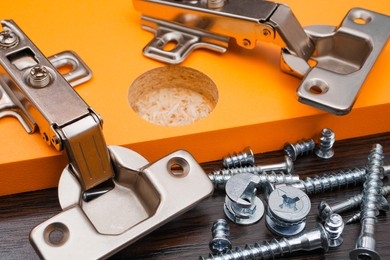Fasteners are the unsung heroes of construction and engineering, quietly holding together the world around us. From skyscrapers to smartphones, fasteners play a crucial role in ensuring that everything stays put. But choosing and assembling fasteners is not as simple as it may seem. There are various factors to consider to ensure a secure and durable connection. In this comprehensive guide, we will explore the key points to remember when selecting and assembling fasteners.

Major Points to Remember for Assembling Fasteners
1. Understand the Application
The first and foremost step in choosing a fastener is to understand the application. What are you trying to fasten, and where will it be located? Is it a structural component or a decorative piece? The answers to these questions will help you determine the type of fastener needed and the load-bearing requirements.
2. Consider Material Compatibility
Matching the fastener material to the materials being joined is crucial. For instance, when fastening metal to metal, it’s essential to select fasteners made of materials compatible with each other to prevent corrosion and galvanic reactions.
3. Choose the Right Type of Fastener
Fasteners come in various types, including bolts, screws, nuts, washers, anchors, and rivets, each designed for specific applications. Select the type that suits your project’s requirements. For example, bolts are excellent for high-tension applications, while screws work well for fastening materials together.
4. Know the Load Requirements
Understanding the load requirements is vital for selecting the right fastener. Consider both static and dynamic loads and calculate the maximum force the fastener will need to withstand. Overestimating load capacity is always safer than underestimating it.
5. Thread Type and Pitch
Pay attention to the thread type and pitch. Coarse threads offer better grip in softer materials, while fine threads are suitable for harder materials. Ensure that the thread type and pitch match between the fastener and the hole or nut.
6. Size Matters
The size of the fastener is crucial. It should be compatible with the size of the hole, nut, or material being fastened. Using a fastener that is too small or too large can compromise the connection’s strength and integrity.
7. Proper Torque
When assembling fasteners, it’s essential to apply the correct torque. Over-tightening can damage the fastener or the materials, while under-tightening can lead to a loose connection. Refer to manufacturer recommendations for torque values.
8. Lubrication
Lubrication can significantly reduce friction during fastener assembly. This is especially important for larger or high-tension fasteners. Use the appropriate lubricant for the specific fastener and application.
9. Surface Preparation
Proper surface preparation ensures a secure connection. Clean surfaces of debris, rust, or paint, and ensure they are flat and even. Rough or uneven surfaces can lead to improper fastening.
10. Safety First
Always prioritize safety during fastener assembly. Wear appropriate personal protective equipment, use the right tools, and follow safety guidelines. Additionally, inspect fasteners and connections regularly for signs of wear or fatigue.
11. Consult Experts
If you’re unsure about which fastener to use or how to assemble it correctly, don’t hesitate to consult experts or refer to industry standards. Fastener manufacturers and hardware stores often have knowledgeable staff who can provide guidance.
12. Consider Environmental Factors
Take into account environmental conditions. If your fasteners will be exposed to moisture, extreme temperatures, or chemicals, select materials and coatings that can withstand these conditions without deteriorating.
13. Quality Matters
Invest in high-quality fasteners from reputable manufacturers. Quality fasteners are less likely to fail prematurely and offer better long-term performance.
14. Follow Industry Standards
Adhere to industry standards and guidelines for fastener selection and assembly. These standards exist for a reason: to ensure safe and reliable connections.
15. Test and Evaluate
Before using fasteners in critical applications, conduct tests or prototypes to assess their performance and suitability. This can help identify any issues early in the project.
Conclusion
In conclusion, choosing and assembling fasteners is a critical aspect of any construction or engineering project. Neglecting these considerations can lead to costly failures, safety hazards, and project delays. By understanding your application, selecting the right type and size of fastener, following proper assembly procedures, and prioritizing safety, you can ensure that your fasteners do their job effectively and reliably, holding your projects together for years to come.
We as Candorr International are Manufacturer, Exporter & Supplier of AnchoringSpecialties. We are one of the leading suppliers of Anchoring Technologies forConstructions, Infrastructures & Allied Industries. We offer our customers a wide spectrum in all relevant areas of fixing technology – chemical, steel, and nylon fixings.You can check out a wide variety of Anchor Fasteners on our website. In addition to that you can place a custom order by reaching out to us at [email protected]
